Walker Lake is on the brink of collapse. Is this the year it starts rebounding?
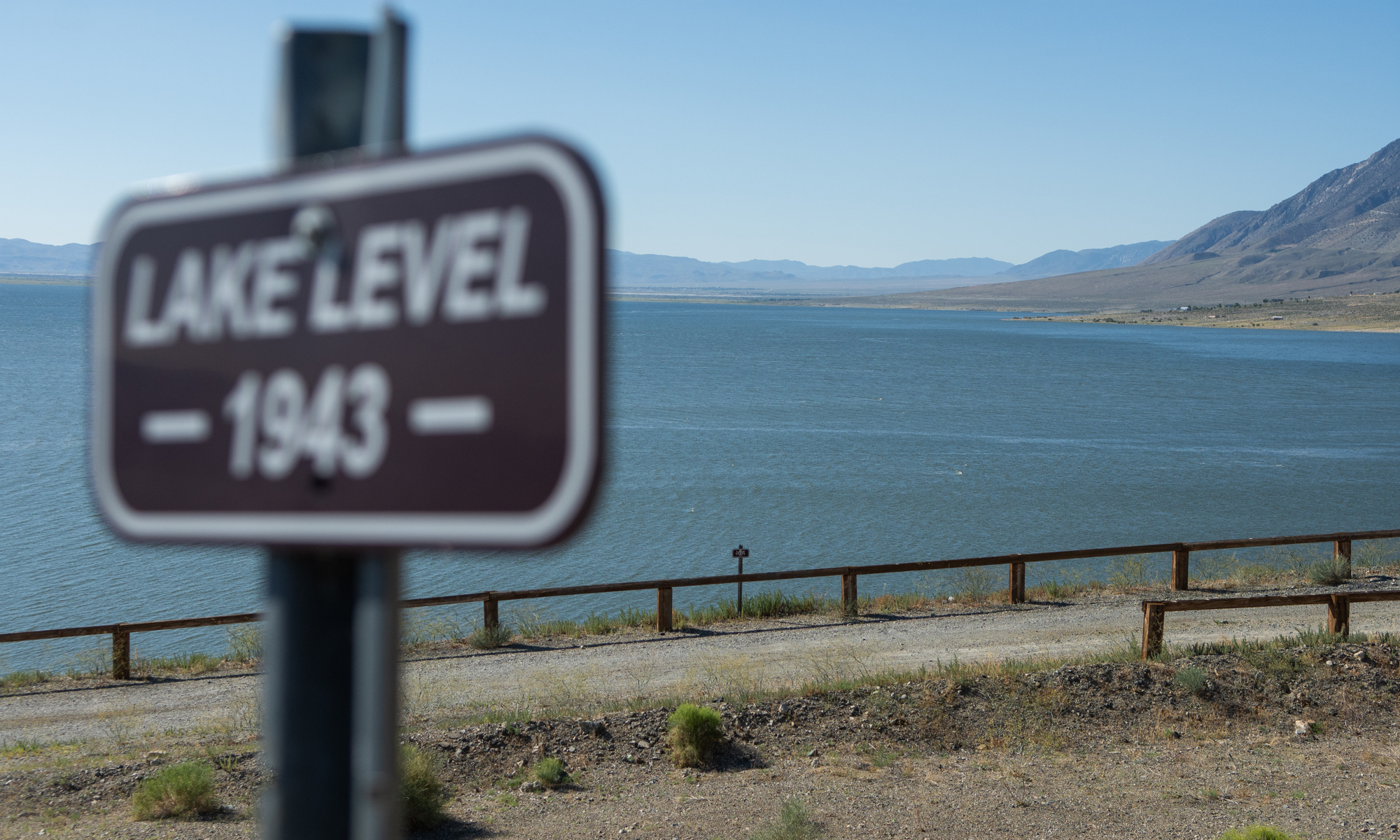
Peter Stanton remembers the first time he laid eyes on Walker Lake.
Rounding a bend on Highway 95 while driving from south Texas to Northern Nevada, he saw a large patch of blue surrounded by a sea of brown, Mount Grant and the Wassuk Range towering above.
“The sun had gone behind the mountains but was still hitting the lake. It was so memorable and so beautiful, and at the same time you could tell that something was wrong,” Stanton recalls. “It’s hard not to have the sense that something ain’t right when you’re at Walker Lake.”
Walker Lake has been drying up for decades due largely to agricultural and ranching diversions. The Walker Basin Conservancy, a nonprofit organization trying to restore the lake to healthy levels and where Stanton now serves as director, on its website calls the lake’s decline “an ecological tragedy more than a century in the making.”
The slow death of the lake has had ramifications spanning from economic impacts on the town of Hawthorne to cultural impacts on Indigenous tribes. Wildlife has suffered.
If Stanton had rounded the bend and seen Walker Lake a few decades earlier, he would have been greeted by bustling beaches packed with campers, fisherman on boats peppering the lake and flocks of birds bobbing on the water.
Instead, Stanton drove past docks leading to nowhere, vast stretches of gray rocks and scrubby brush separating them from the water.
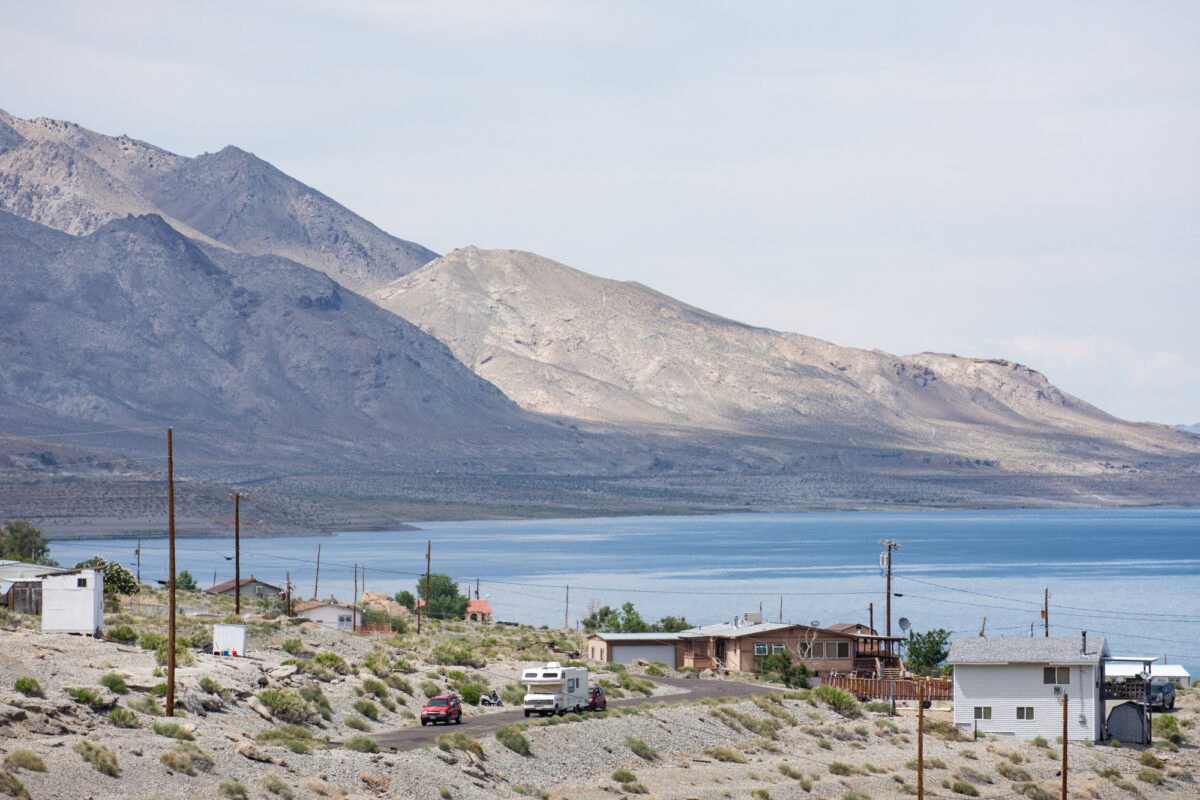
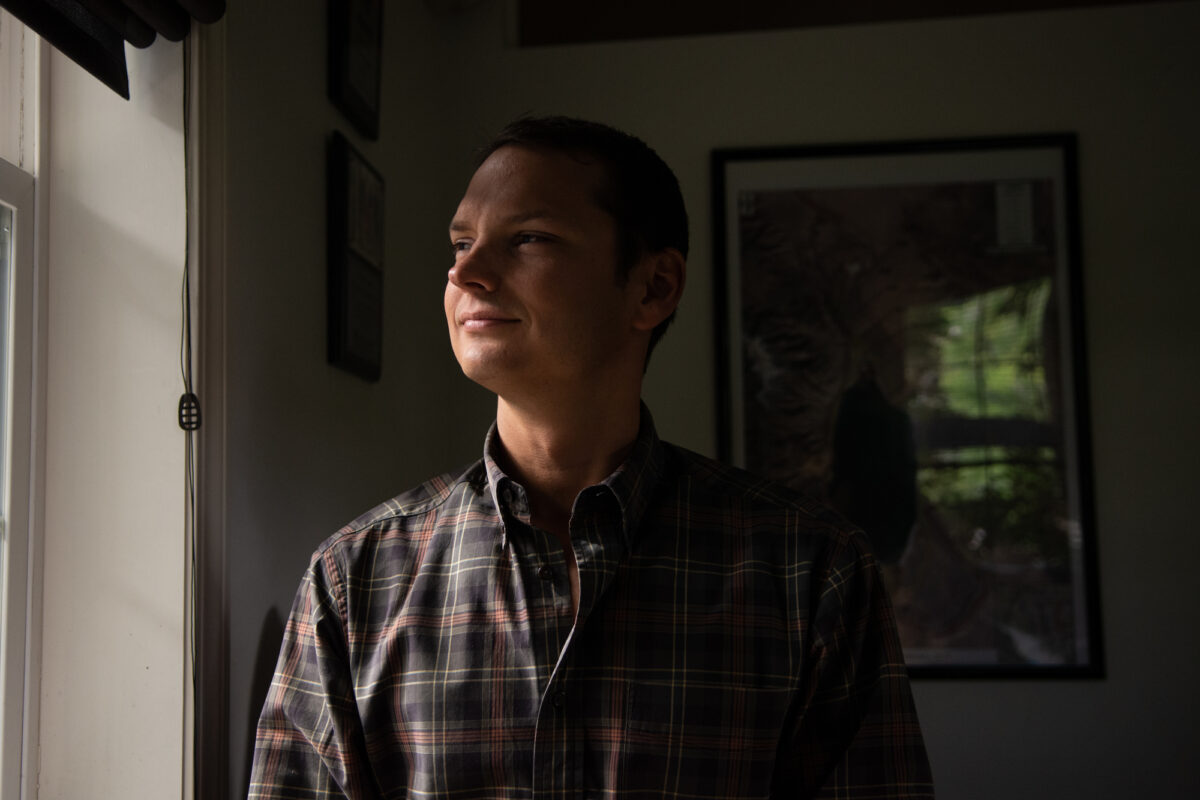
The beaches that once meant sunbathing, boat launches and swimming now surround the diminished lake like a dirty bathtub ring, a stark reminder of just how low the lake’s water levels have dropped.
But this year, the Walker River Basin broke its snowpack record, receiving 306 percent of its median amount. Roughly 605,000 acre-feet of water — enough to cover 605,000 football fields with a foot of water — is expected to flow out of the basin’s mountains this year, with much of that water flowing into the lake.
In drought years, snowmelt in the basin is diverted for irrigation before it reaches the lake. But this year, with so much water, the lake has already risen nearly 13 feet and is likely to go up several more feet as runoff continues, just as it did in 2017 when the basin received about 300 percent of the average snowpack.
Those trying to save the lake are now wondering — is this the year the lake is reborn?
As salt levels rise, birds and fish disappear
The Walker River Basin spans nearly 2.6 million acres across California’s Mono County and the Walker River Paiute Reservation and Mineral, Douglas and Lyon counties in Nevada.

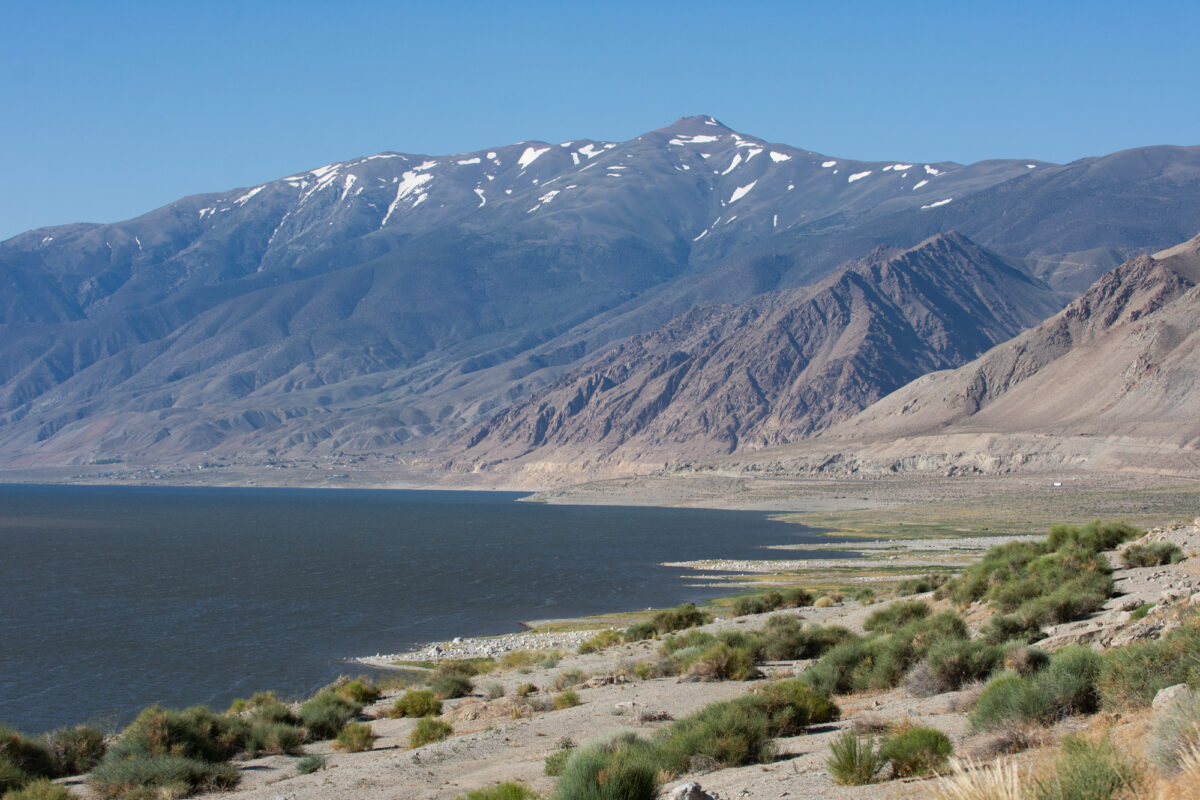
At the terminus of the river, Walker Lake, or “Agai Pah,” is one of the last remnants of prehistoric Lake Lahontan, a massive body of water that spanned from near the present-day Oregon border to Hawthorne.
When she was a little girl, Andrea Martinez was afraid to go into Walker Lake. Her dad would take her on fishing trips — their people, the Agai Dicutta, or “Trout Eaters,” relied on the lake as a primary food source — but she’d also heard stories of the Walker Lake Serpent, a creature living in the depths of the lake.
As she grew up, Martinez — now the tribal chair of the Walker River Paiute Tribe — realized the lake wasn’t the same as the one portrayed in a 1975 tribal history book — Walker River Paiutes: A Tribal History by Edward C. Johnson — that she keeps in her office.
In the book, elders recall harvesting pine nuts at Mount Grant, the mountain that serves as the nucleus of the tribe’s creation story, as well as buckberry and rice grass closer to the lake.
“When the lake was drying up, it felt like we were almost losing our identity,” she said. “We were losing part of our community. We’ve been praying for water.”

The last time a Lahontan cutthroat trout was caught in the lake was 2009, the same year the town of Hawthorne, situated on the south end of the lake, canceled its annual loon festival due to a lack of birds.
The lake served as an important stopover location for birds such as the common loon as they migrated on the Pacific Flyway. The birds would feast on small fish, such as the tui chub, in the lake, and old-timers in Hawthorne, including Glenn and Marlene Bunch, recall a time when 1,500 loons were counted on the lake on a single day.
The festival celebrating the birds was started in the 1950s, drawing thousands of tourists. He remembers biologists using the festival as an opportunity to monitor and band the birds.
Under cover of pitch-black skies, residents and biologists would boat onto the lake at night with cardboard boxes used for shipping bananas, Glenn Bunch recalls. Full of holes, the boxes were perfect for transporting wildlife.
When they’d find loons floating on the water, they’d shine a bright light — the birds would freeze, startled.
They would net the birds, transporting them to the firehouse in the banana boxes. The birds were loud and agitated, poking their sharp beaks through the holes in the box before they were weighed, banded, measured, then released back on the lake.
“They were looking to get even with you for getting them out of the water,” said Glenn Bunch, who now serves as president of the Walker Lake Working Group, a Hawthorne-based group focused on saving the lake.
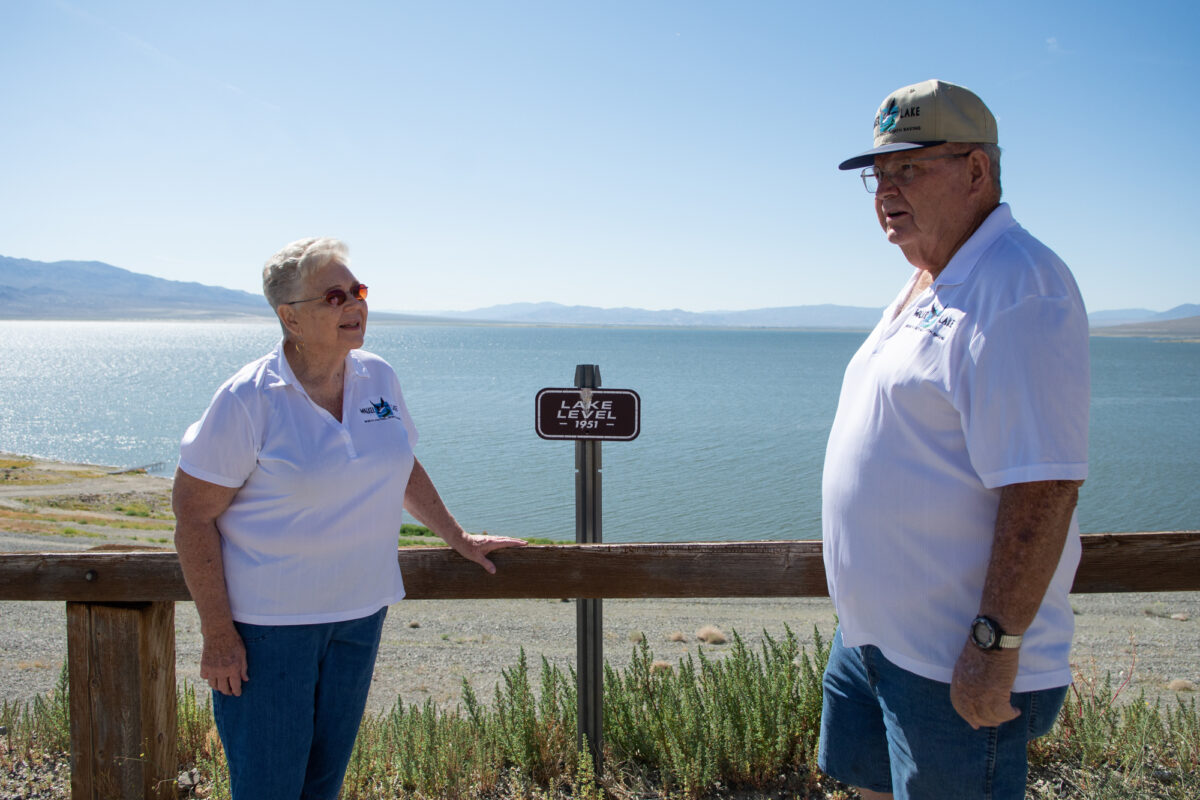
Nevada Department of Wildlife records don’t show records of banding loons on Walker Lake. But department biologists did confirm that loons no longer visit Walker due to the lack of fish, although the department does not have clear data on where the birds are now stopping instead. Nearby Topaz Lake or Lake Tahoe could provide stopover points.
The decline in wildlife is largely attributed to the shrinking lake’s increasing salinity.
The amount of residue in the lake — total dissolved solids (TDS) — was measured at 2,500 milligrams per liter in 1882. By 1994, the lake’s surface area had shrunk by 50 percent, and TDS levels were up to 13,300 milligrams per liter. Recent measurements clocked the lake’s TDS levels around 24,000 milligrams per liter — the equivalent of 3.2 tablespoons in a liter.
In 2005, Congress enacted a law creating a program to acquire water rights from willing sellers in the Walker Basin.
Negotiations on acquisitions were stalled, Glenn Bunch recalls, so in stepped the Walker Basin Conservancy. Established in 2014, the nonprofit group administers the Walker Basin Restoration Program and has worked with about 50 farmers and ranchers, procuring ongoing access to just over half the water rights needed to restore the lake.
That’s enough to slow the lake’s decline, but the conservancy’s goal is to increase annual flows to at least 50,000 acre-feet and bring the lake back to depth and salinity levels not seen in half a century.
At that level, Lahontan cutthroat trout, the tui chub and other fish could repopulate the lake. With fish in the lake, migratory birds could once again use Walker Lake as a stopover point on the Pacific Flyway.
“I never thought I would see this in my lifetime … seeing it (water) pouring into our lake and seeing the water levels rise almost every day. It’s a blessing,” Martinez said. “Seeing the water come back into the lake, we are hopeful we will have fish back in the lake.”
Putting a price tag on downstream impacts
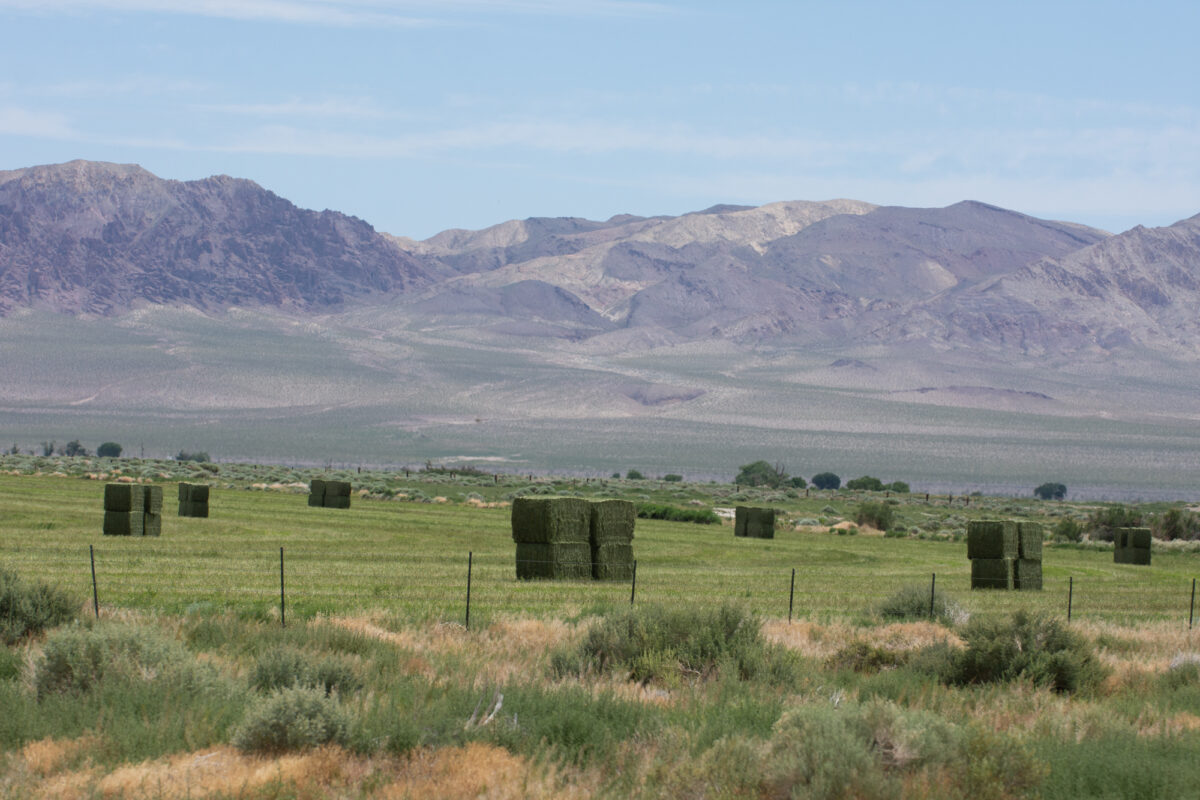

As late as 1850, water flowed freely into Walker Lake.
But as white settlers started farming in present-day Mason and Smith valleys, they diverted water for irrigation. The construction of Topaz and Bridgeport reservoirs in the 1920s and 1930s allowed water managers to store more water for farmers to use later in the growing season. Groundwater pumping for irrigation started in the 1960s in Mason and Smith valleys, and the river responded by recharging the aquifer, sending even less water into the lake.
By 2017, more than 43,000 acres of cropland were being irrigated and more than 100 cattle outfits operated in the Walker River Basin.
This year, ranchers in Mason and Smith valleys are battling too much water instead of not enough, but previous diversions have decreased Walker Lake’s elevation by about 150 vertical feet since 1882.
It’s a hard number to fathom, so years ago members of the Working Group installed signs at the lake delineating its water level over the decades. Anyone walking or driving to Sportsman’s Beach on Walker Lake’s west shore travels not just down a road to the lake, but down a visual timeline of its decline as agriculture ramped up.
Agricultural sales between Lyon and Mineral counties, the areas that rely most heavily on the river for irrigation, generated more than $100 million in 2017, with cattle operations comprising more than two-thirds of all revenue.
Downstream of the valleys in Hawthorne, half of Mineral County’s economy was driven by Walker Lake tourism and recreation as late as the 1980s, according to the Working Group. Calls and emails to Mineral County officials to confirm that number were not returned to The Indy.
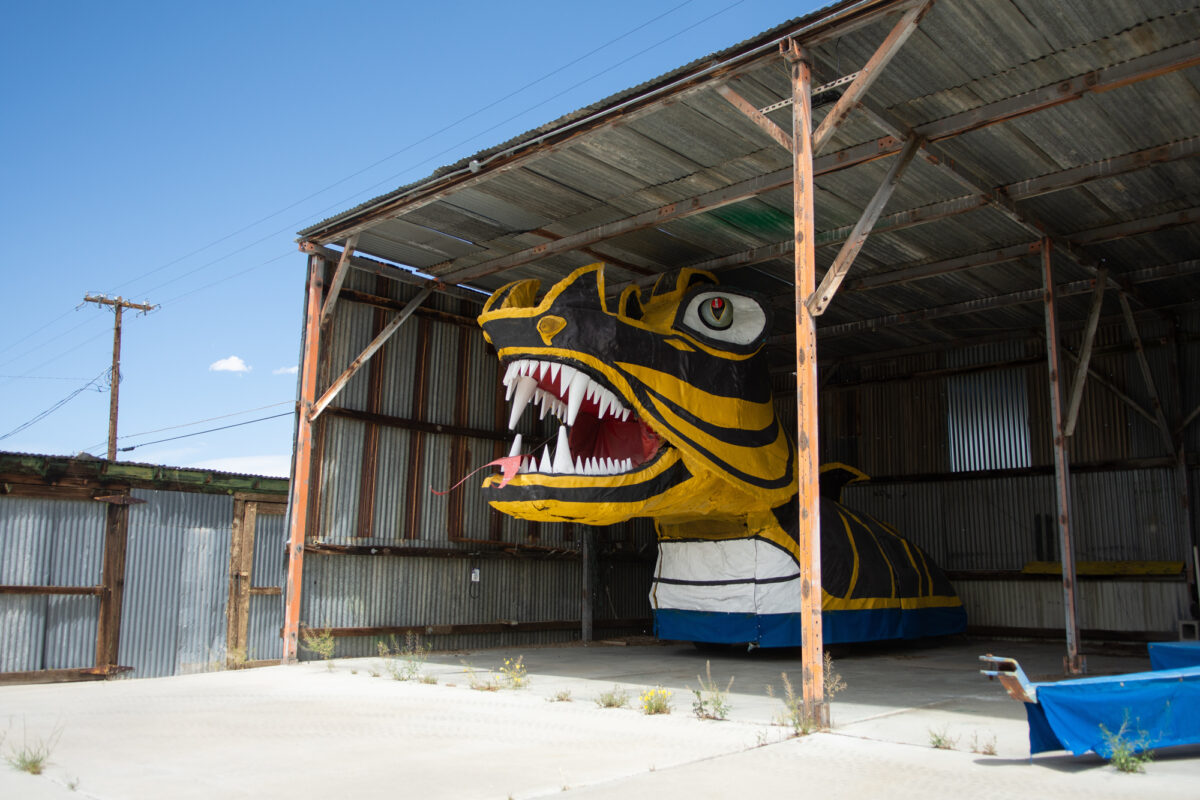
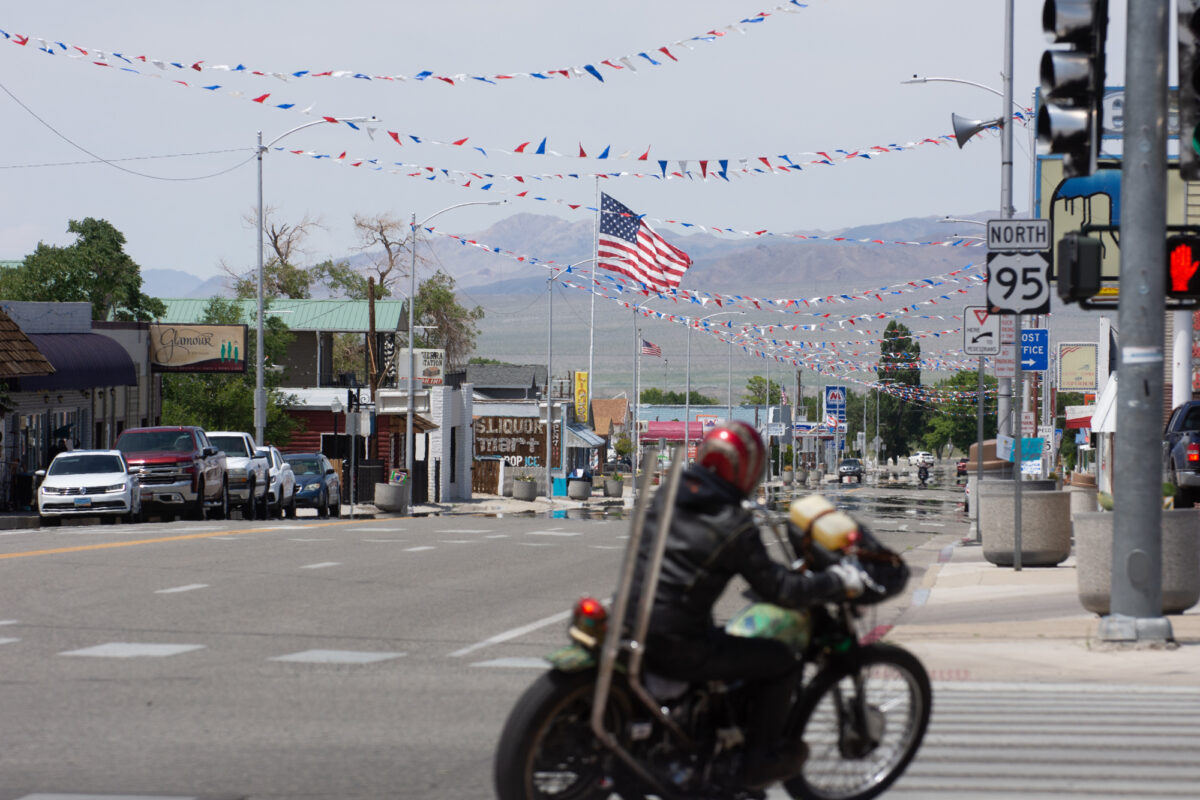
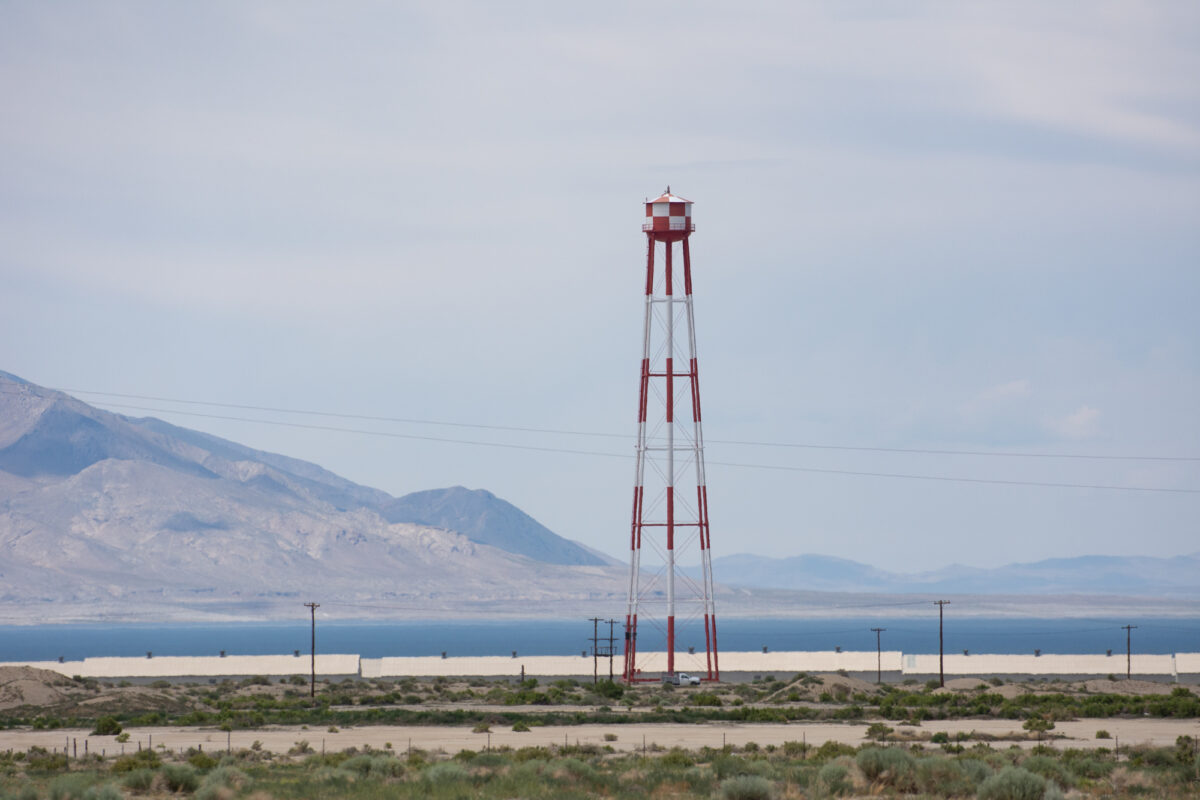
Hawthorne’s history dates back to 1881 along the old Carson & Colorado Railroad. The area quickly grew to a transportation hub for regional mining camps and, in the 1930s, the U.S government chose the town as the site of a new ammunition storage facility.
Now, downtown Hawthorne reflects an aging community and businesses whose tourism-driven heydays have come and gone. In the 1980s, Highway 95 was rerouted around downtown Hawthorne, diverting through traffic from the town’s downtown core. Now, for many drivers, Hawthorne is a place to fill up on gas or grab a snack, not a destination.
Marlene Bunch, the wife of Walker Lake Working Group President Glenn Bunch, remembers when the lake’s beaches were filled two to three deep with campers.
“It hurts my heart to see how many people through upstream diversions can create such a travesty to the environment and the community,” she said. “It doesn’t have a dollar value, but how can you put a price on the serenity of someone looking out over the water, a bird flying over the water, schools of fish? You can’t put a price on that.”
‘Walker Lake can come back’
The lake, and the East and West Walker rivers that feed it, have been litigated as far back as 1902 as farmers, the irrigation district, the county and anyone else with a vested interest in the region’s water fought over the over-appropriated basin. With matters still tied up in court, Stanton said he recognizes the battle to restore the lake will take decades.

This year’s influx of water in the basin is not a long-term solution to restoring Walker Lake — open bodies of water in Nevada evaporate at about 4 feet per year — but it buys time for the conservancy and others who support the lake’s restoration.
The conservancy’s first change application (the process allowing the change of purpose and location of water use) was filed in 2011. Due to the legal processes required to transfer the water, it took eight years for the transfer to make its way through court and by the federal watermaster.
Stanton is hopeful that this year’s high volume of snowmelt creates an opportunity for the conservancy to get even more agricultural producers on board with short-term water leases or permanently selling their water rights.
“If this program shows one thing, it’s that market-based solutions buying back water rights can work with a lot of time,” Stanton said.
Earlier this year, Sen. Pete Goicoechea (R-Eureka), introduced a bill that could have helped that process. SB176 outlined the Nevada Water Buy-Back Initiative that would have created an account to purchase and retire water rights from those willing to sell, giving state water officials the ability to reduce overuse.
The bill did not pass before the Legislature adjourned earlier this month.
But Stanton remains optimistic.
“The resounding message we want to send in a year like this is we can do this,” he said. “Walker Lake can come back. If you had two years like this, you can put trout back in the lake. The impact is profound.”
